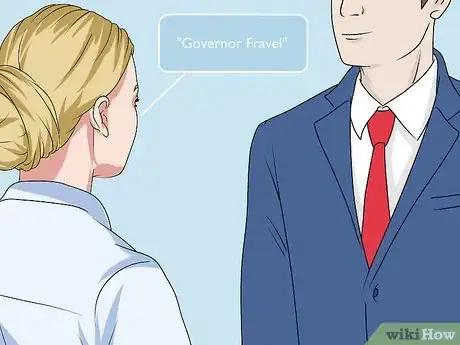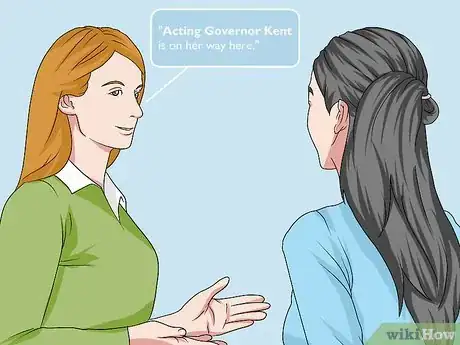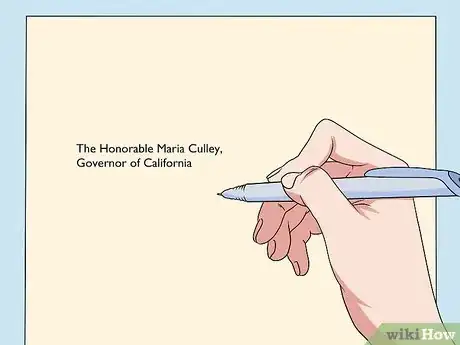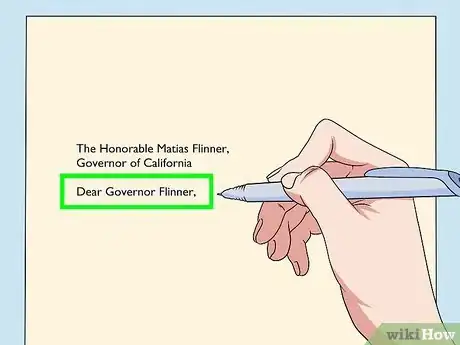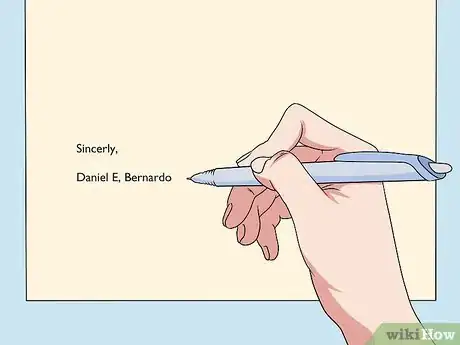This article was co-authored by Tami Claytor and by wikiHow staff writer, Hannah Madden. Tami Claytor is an Etiquette Coach, Image Consultant, and the Owner of Always Appropriate Image and Etiquette Consulting in New York, New York. With over 20 years of experience, Tami specializes in teaching etiquette classes to individuals, students, companies, and community organizations. Tami has spent decades studying cultures through her extensive travels across five continents and has created cultural diversity workshops to promote social justice and cross-cultural awareness. She holds a BA in Economics with a concentration in International Relations from Clark University. Tami studied at the Ophelia DeVore School of Charm and the Fashion Institute of Technology, where she earned her Image Consultant Certification.
There are 7 references cited in this article, which can be found at the bottom of the page.
This article has been viewed 136,608 times.
Governors are in charge of the executive branch for each state or territory that they govern. Often, they will talk to citizens that live in their territory to get public opinions or take advice. Addressing someone like this may seem intimidating, especially if you haven’t talked to someone in political power before or you don’t know the protocol. However, if you save their full title for special events and never call them by their first name, you can be talking to governors tactfully and respectfully in no time.
Steps
Talking In Person
-
1Call them Governor (Surname) when talking to them directly. When you are talking to a Governor that’s currently in office, it’s polite to address them as “Governor” and not as Mr. or Mrs. This shows that you recognize their position in office and what their job is. You should never call them by their first name unless specifically asked to do so.[1] [2]
- For example, if the governor’s name is Zackary Fravel, call them “Governor Fravel” when you speak to them.
- If you are talking to the spouse of a governor, you can simply call them “Mr./Mrs. (Surname).”[3]
-
2Call a governor “Sir/Ma’am” after addressing them by name. Once you’ve greeted a governor by their title and surname, you can call them sir or ma’am throughout your conversation. There’s no need to keep calling them “Governor (Surname).”[4]Advertisement
-
3Refer to them as Acting Governor (Surname) when you talk about them. If you are talking about a Governor when they are not around, you can call them “Acting Governor (Surname).” This is a more specific way to refer to them. The “Acting” title is optional, but it might help to specify who you are talking about.[5]
- For example, if the governor’s name is Mary Kent, you can say something like, “Acting Governor Kent is on her way here.”
- Former governors do not get a special title. They can be referred to as Mr. or Mrs. (Surname).
-
4Introduce them formally with: “The Honorable (Surname), Governor of (State).” Formally, a Governor’s title is “The Honorable (Surname).” After their title, you can specify which state or territory that they govern. This long title should only be used when you are introducing them to a crowd, like at a talk or a rally. Using their full title in everyday life would be a hassle, so you should only say it at formal events.[6]
- For example, if the governor of Washington’s name is James Hert and you are introducing him at a rally, you could say, “And now, The Honorable Hert, Governor of Washington.”
- In Massachusetts, New Hampshire, and South Carolina, a Governor’s full title is “Your Excellency, Governor (Surname).”[7]
Writing a Letter
-
1Address your letter to “The Honorable (Full Name), Governor of (State).” The outside of your letter should be addressed with the governor’s full title. This includes their title of “The Honorable” followed by their first and last name, as well as mentioning which state or territory that they govern. This is the most traditional way to address a governor, which is why it is still used in letter writing.[8]
- For example, your letter should say something like: “The Honorable Maria Culley, Governor of California.”
- If you are addressing your letter to a former governor or a governor’s spouse, you can just use “Mr./Mrs. (Surname).”
-
2Write “Dear Governor (Surname)” to begin your letter. The body of your letter should start with the phrase “Dear Governor (Surname).” Once you start your letter, you can address the governor as if you were speaking to them in person. You should never use their first name in a letter because it is seen as disrespectful.[9]
- For example, start your letter with “Dear Governor Flinner.”
-
3Close your letter with “Sincerely, (Your Title and Full Name).” You should end your letter by telling the governor what your name and full title is so that they understand who you are professionally. This also helps them address you if they want to write you back.[10]
- ”Sincerely” is a formal way to say goodbye. You can also use phrases like “Best regards,” “Thanks,” and “Yours truly.”
References
- ↑ http://www.formsofaddress.info/Governor_US.html
- ↑ Tami Claytor. Etiquette Coach. Expert Interview. 29 September 2020.
- ↑ http://www.formsofaddress.info/Governor_Spouse.html
- ↑ https://emilypost.com/advice/official-forms-of-address/
- ↑ http://www.formsofaddress.info/Governor_US.html
- ↑ https://emilypost.com/advice/official-forms-of-address/
- ↑ http://www.formsofaddress.info/Governor_US.html
- ↑ https://gg.govt.nz/office-governor-general/contacting-governor-general/guidance-writing-governor-general
- ↑ https://www.txdirectory.com/files/ref/forms%20of%20address.pdf
